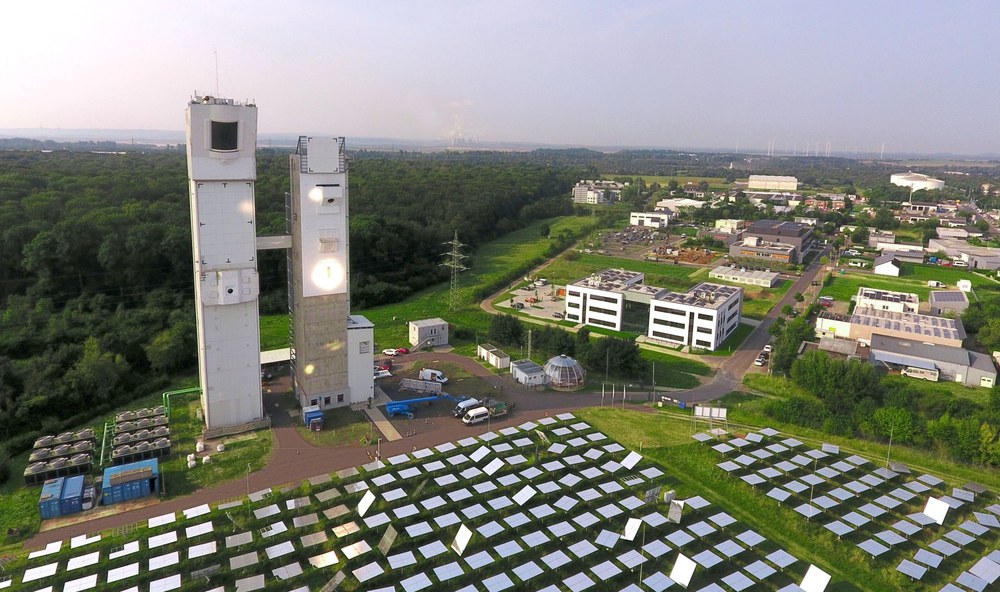Solar Towers Jülich



The Solar Towers Jülich are a globally unique research facility for tests using concentrated natural sunlight to generate electricity, heat and fuels. The facility is not only used by DLR researchers, but is also available to industrial companies for their own tests. Components and systems for solar thermal power plants, the use of high-temperature solar heat for industrial processes as well as components and solar thermochemical processes for the production of fuels are tested here.
Research for solar thermal power plants
The aim of the researchers at the DLR Institute of Solar Research is to achieve higher temperatures and better efficiency in the conversion of solar energy into electricity, in order to reduce the electricity generation costs of solar thermal power plants. The focus is on mirror systems (so-called heliostats) for directing and concentrating solar radiation, solar absorber and energy storage systems as well as theoretical and IT-supported analyses and developments in the field of fluid mechanics, heat transfer and intelligent plant control. Depending on the development status and objective, individual components, functional groups or even a complete solar power plant system can be tested and evaluated on the Solar Towers Jülich.
Test facility for the production of solar fuels
The DLR Institute of Future Fuels and companies use the facility to develop and improve processes for the chemical storage of solar energy. The energy can be stored, for example, in hydrogen or synthesis gas, which is a starting product in fuel production.
Two solar towers, four test levels
More than 2,000 heliostats are located in front of the two solar towers on an area of around ten hectares. They direct and concentrate the sunlight to the two solar towers. The larger of the two is a functioning solar tower power plant, meaning it can produce electricity. A ceramic radiation receiver at the top of the tower absorbs the concentrated sunlight and uses it to heat ambient air to up to 700 degrees Celsius. A steam generator inside the tower uses the high temperatures to convert water into steam, which drives a turbine that produces CO2-free electricity via a generator. The nominal electrical output of the plant is 1.5 megawatts. Although the electricity generated can be fed into the local medium-voltage grid, DLR does not use the plant commercially to produce electricity, but uses it exclusively for research purposes. The tower is 60 meters high and has a research level halfway up, on which various experimental setups can be erected. The large-scale experiments carried out so far have focused on the further development of volumetric receivers and processes for the solar thermal production of hydrogen.
The solar tower power plant is complemented by the somewhat smaller Multifocus Tower. It has three levels with special equipment for the installation of various experiments. On the upper level, the Institute of Solar Research is testing a solar radiation receiver with ceramic beads as a heat transfer, storage and transport medium. The middle level is specially equipped for process engineering applications. For example, high-temperature processes for solar water splitting are tested there. On the lower level, the focus is on molten salt as a carrier medium for high-temperature heat.
The HeliOS control software developed at DLR ensures that the solar radiation reaches the experiments precisely and at the required temperature. It can align each individual mirror so that several experiments can take place simultaneously on the two solar towers.
